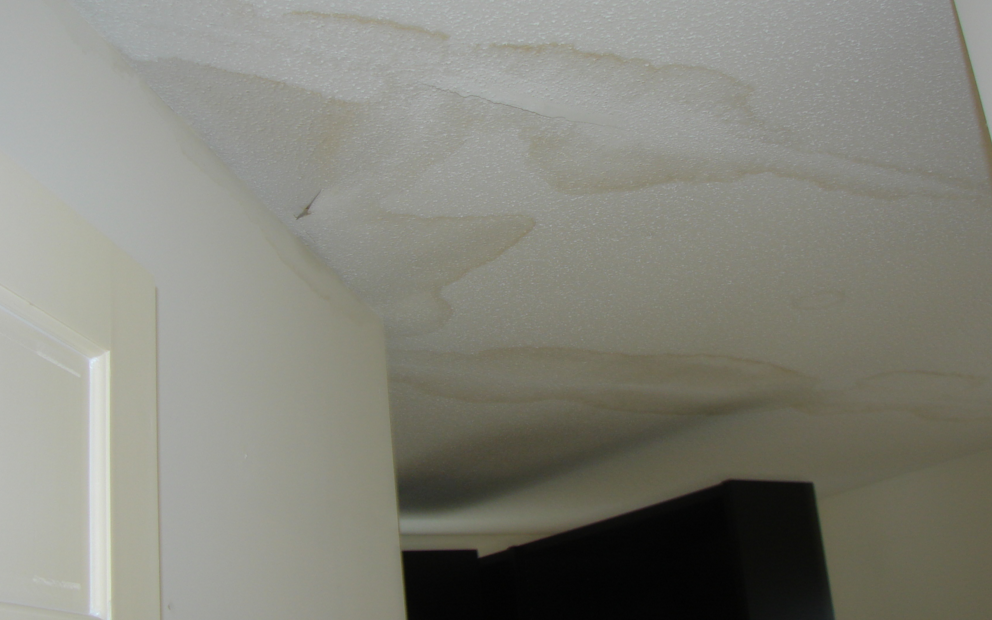Your home is your sanctuary, but it’s not immune to the forces of nature. One of the most concerning issues homeowners face is water damage. Detecting water damage early is crucial for preventing costly repairs and maintaining the structural integrity of your home. In this article, we will explore the early signs of water damage on the ceiling and provide insights into addressing this common problem.

Understanding the Impact of Water Damage
Water damage can have a far-reaching impact on your home. It not only weakens the structural integrity of your property but also poses health risks due to mold growth. Recognizing the early signs of water damage is essential for taking swift action.
The Hidden Menace Above
While water damage can manifest in various areas of your home, ceiling damage is particularly worrisome. Here are some early signs to watch for:
1. Discoloration and Stains:
Water damage often leaves behind noticeable stains or discoloration on your ceiling. These stains might be brown, yellow, or even gray, depending on the severity and the source of the water intrusion.
2. Peeling or Bubbling Paint:
If you notice that the paint on your ceiling is starting to peel or bubble, it could be a sign of water damage. Water can seep through the paint and cause it to lose adhesion.
The Sneaky Culprits
Now that you’re aware of what to look for, it’s essential to understand the potential sources of ceiling water damage:
1. Roof Leaks:
A damaged or aging roof can lead to leaks, allowing water to infiltrate your home. Regular roof inspections can help identify issues before they cause significant damage.
2. Plumbing Issues:
Leaky pipes, clogged drains, or damaged plumbing fixtures can result in water leaks that affect the ceiling. Keep an eye on your plumbing systems and address any issues promptly.
3. Condensation:
Excessive condensation can lead to moisture buildup on the ceiling, promoting the growth of mold and mildew. Ensure proper ventilation and insulation in your home.
4. Appliance Leaks:
Appliances like water heaters, air conditioners, and washing machines can malfunction, leading to water leaks that affect the ceiling. Regular maintenance and inspections are crucial.
Taking Action
If you notice early signs of water damage on your ceiling, it’s essential to take action promptly:
1. Identify the Source:
Determine the source of the water damage. Is it a roof leak, plumbing issue, or condensation? Identifying the source is vital for effective repairs.
2. Stop the Water Intrusion:
If possible, stop the water intrusion immediately. For example, if you have a roof leak, place a bucket under the drip to prevent further ceiling damage.
3. Repair the Damage:
Address the water damage promptly to prevent it from spreading. This may involve patching up the ceiling, repainting, or replacing damaged materials.
4. Address the Underlying Issue:
Don’t just fix the visible damage—address the underlying problem. If it’s a roof leak, contact a professional roofer. For plumbing issues, consult a plumber.
The Importance of Prevention
Preventing water damage is always more cost-effective and less stressful than dealing with the aftermath. Here are some preventive measures to consider:
1. Regular Inspections:
Schedule regular home inspections to catch potential issues early, such as roof damage or plumbing leaks.
2. Maintain Your Roof:
Keep your roof in good condition by addressing any missing shingles or damage promptly. Regular roof maintenance can extend its lifespan.
3. Proper Ventilation:
Ensure that your home has adequate ventilation to reduce condensation and humidity levels.
4. Maintain Appliances:
Regularly service and maintain appliances to prevent leaks or malfunctions that could lead to water damage.
Conclusion
Early signs of water damage on the ceiling are warnings that should not be ignored. Promptly addressing these issues can save you from costly repairs and preserve the integrity of your home. Regular inspections, maintenance, and a proactive approach to potential sources of water damage are key to ensuring your home remains a safe and comfortable haven.